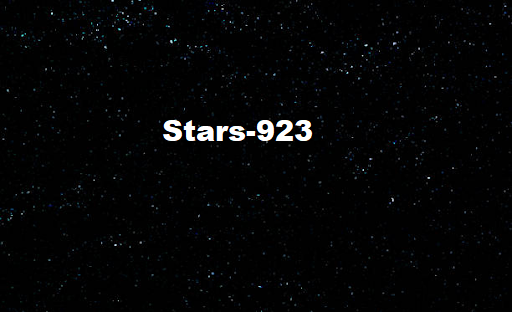The universe is vast, with countless stars scattered across the night sky, each carrying a unique story. Among these celestial bodies, Stars-923 stands out as a captivating object of study. This blog post explores the significance of Stars-923, its formation, scientific value, and the continuing research dedicated to understanding this star.
Stars-923 is a specific classification assigned to a star in a scientific star catalog. Stargazers use such classifications to track and study various characteristics of stars, such as brightness, temperature, and distance from Earth. Though Stars-923 may not be as famous as other stars, it holds great importance in the world of astronomy for the insights it can provide about stellar behavior and development.
Every star, including Stars-923, has distinct properties that make it unique. Scientists study these traits to comprehend more about the star’s life cycle, including its formation, mass, and chemical makeup. Stars-923 could be in any stage of its stellar journey, from a young star just starting to shine to an old star nearing the end of its life.
By gathering data on Stars-923, astronomers can compare it with other stars, looking for patterns or anomalies that help refine our understanding of the universe. The more we learn about stars like Stars-923, the better we can predict events such as supernovas or black holes that shape assemblies.
Like all stars, Stars-923 formed from a massive cloud of gas and dust known as a nebula. Through a process called stellar nucleosynthesis, gravity caused the cloud to collapse, forming a dense core known as a protostar. As the protostar gained more mass, nuclear fusion began in its core, marking the birth of a fully-formed star.
Stars-923’s formation process is of great interest to scientists, as understanding its history can reveal more about how different types of stars form and change. Researchers are eager to determine whether Stars-923 is a young star still in its prime or an aging star approaching its final stages.
Stars like Stars-923 are valuable to astronomers because they act as cosmic laboratories where theories about physics, chemistry, and the structure of the universe can be tested. By studying the light emitted by Stars-923, scientists gain information about its composition, temperature, and how far it is from Earth.
Moreover, Stars-923 might be part of a binary or multi-star system, where it interacts with nearby heavenly bodies. These interactions provide important data about gravitational forces and the subtleties of star systems, helping to build more accurate models of the universe.
Constellations have been used throughout history to map the stars and navigate the night sky. Stars-923 could be a part of a larger group, aiding astronomers in refining star maps. For amateur stargazers, locating Stars-923 can be a fun and educational experience, enhancing their understanding of celestial navigation.
With advancements in technology, the future holds great promise for deeper exploration of Stars-923. Observatories like the James Webb Space Telescope will allow scientists to collect more detailed data about its life cycle, composition, and even whether it has planets orbiting around it.
The study of Stars-923 could also play an important role in space exploration, as stars like these may serve as navigational points for future spacecraft on long journeys across the galaxy.
If you want to observe Stars-923 yourself, you don’t need advanced equipment. A simple telescope or even a pair of eyeglasses can help you locate it in the night sky. Star-gazing apps and star maps are useful tools for pinpointing Stars-923’s position. While it may not be visible to the naked eye, the experience of tracking such a distant star brings the wonders of the universe a little closer to home.
Stars-923 is a star classification used in astronomical catalogs to identify and study a specific celestial body.
Stars-923 can be observed using a small telescope or binoculars. You can also use astronomy apps and star maps to help locate its position in the night sky.
Stars 923 might be part of a constellation, helping astronomers map the sky and study the relationships between stars.
Stars-923 provides valuable data that helps astronomers understand stellar evolution, the subtleties of star systems, and how stars influence galaxy formation.
It is possible that Stars-923 has planets orbiting around it, but more research is needed to confirm this.
Stars-923 could potentially be part of a binary star system, where two stars orbit a common center of mass, leading to interesting interactions that are of great interest to scientists.
Stars-923 may have distinct properties such as its brightness, mass, or potential binary system status, which makes it unique among other stars in the universe.
Stars-923 is not just another star in the sky; it holds vital clues to unraveling the mysteries of the universe. From its formation to its role in group mapping and future space exploration, Stars-923 offers insights that deepen our understanding of the cosmos. Whether you’re a professional astronomer or an amateur stargazer, Stars-923 is a reminder of the endless wonders waiting to be explored in the universe.

